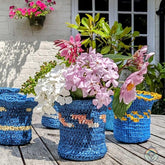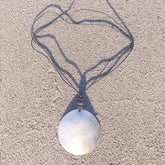Sustainable Upholstery: How to Revive Your Furniture Responsibly
Katie Fitzjohn is an award winning sustainable upholsterer and she kindly contributed this blog to our RainbowLife platform. If you would like to share your thoughts about sustainable/ethical topics please contact lisa@rainbowlife.co.uk
Sustainable Upholstery
Around 670,000 tonnes of furniture ends up in landfill every year in the UK, and new furniture sold on the high street is often produced in countries where workers' rights are a low priority, so it’s great to see more and more people repairing, upcycling and reupholstering. But did you know that some upholstery options are less sustainable than others?
Upholstered furniture is grouped into two types: modern and traditional. Modern upholstery is usually for furniture made after 1950 and uses foams - these are typically made from virgin plastic (eventually breaking down into microplastics, or burned in waste disposal) and contain fire retardant chemicals that include volatile organic compounds and persistent organic pollutants, which the UK government defines as poisonous chemical substances. Both can be seriously harmful to health - if you want more info on the grim chemicals used check out this paper from the Environment International journal..
Traditional upholstery uses organic fibres, however these may originate from animal slaughter (such as boar hair) so might not be considered an ethical choice.
Don't worry though, if you find the right upholsterer (or do it yourself) you can source much kinder materials. For modern upholstery there are many new products such as Springbond’s Ultraflex (made entirely from recycled plastic bottles), Cocoloc (chemical-free coconut fibre and rubber), and biodegradable latex foam. For traditional work you can use coconut fibre, cotton and wool. Some of the more old-school upholsterers can be reluctant to use new methods and products though, so make sure you check with anyone you’re thinking of hiring to make sure they are happy to work with the products that you want.
Choosing fabrics can be the most fun part of an upholstery project. Check out Rainbow Life’s guide to sustainable textiles for guidance on sustainable fibres and the certifications that promise ethical and sustainable production. You can also purchase more sustainably by using vintage textiles (make sure they meet the requirements of fire regulations - see page 19 of this guide), buying deadstock fabric (hainescollection.co.uk have a lovely selection of discounted high-end fabrics that have been saved from landfill), or check out eBay where upholsterers often sell remnants that might otherwise not find a use.
So let’s save furniture that still has life in it from getting burned or buried! If you want to do it yourself you could watch some of the great tutorials online, or - even better - find a leisure class. You can take your piece of furniture along and have an expert support you to upholster it to a high standard. If you’re looking for an upholsterer in the UK, try the AMUSF’s website to find a highly skilled person in your area, or if you’re based in North London or Herts, then get in touch with me!
Katie Fitzjohn
Award-winning upholsterer, using sustainable and ethical materials - find me at www.fableupholstery.com












Leave a comment
All blog comments are checked prior to publishing